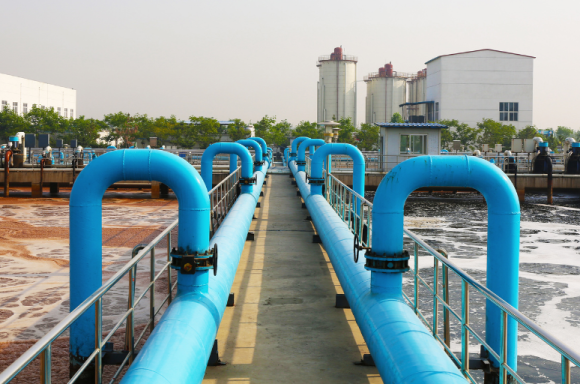Accurate recommendation of optimum setpoints provided continuously in real time.
Chemicals are an operating cost for a water treatment plant. Operators can reduce costs by dosing just enough chemical to achieve desired water quality but not overdosing.
In this application we consider a water treatment plant that takes raw water from a surface water source and treats it before delivering to a water supply network. The raw water contains suspended solids which are clumped into larger aggregates through the addition of a coagulant then separated from the water using a filtration process.
The water treatment plant uses a jar test to determine the coagulant dose. In this manually performed lab test a sample of the raw water inflow is obtained and divided among a series of jars. A difference dose of coagulant is added to each jar then all jars are agitated at a consistent rate. Agitation is stopped and the jars are allowed to settle for a period of time. The turbidity of the raw water sample in each jar is then measured and the dose rate resulting in lowest turbidity is defined as optimum.
The disadvantage of the above test is that it is formed at discrete times, and as such can not react to a continuously changing raw water quality.

A predicted value model is trained with inputs including surface water source depth, raw water flow, raw water turbidity, streaming current detector, turbidity of filtered water, disinfection chlorine dose rate, and residual chlorine . The model is trained to predict the optimal coagulant dose rate determined by jar testing.
Once the model is trained, the VROC system provides dashboards to validate the effectiveness of the model as well as model statistics.
VROC ingested the historical data and provided insightful results as to the major factors responsible for failures. In addition, VROC was able to identify transient factors such as one month where the chemical supplier to the plant supplied incorrect chemicals. VROC correctly identified that the chemical was the significant factor causing failures for that particular month.
The VROC system allows this customer to save significant time, rather than spending thousands of engineering hours on each problem they can quickly identify the root cause of individual failures or events and concentrate on fixing the problem rather than their previous method of comparing trends or using calculations in Excel.
With no-code AI, this Water Treatment Plant was able to:
Whether you’re launching your first pilot or scaling AI across your enterprise, VROC’s end-to-end platform and expert team can help you unlock data, optimise performance, and accelerate results.
Interested in a demo of one of our data solution products?
DataHUB4.0 is our enterprise data historian solution, OPUS is our Auto AI platform and OASIS is our remote control solution for Smart Cities and Facilities.
Book your demo with our team today!
Complete the form below and we’ll connect you with the right VROC expert to discuss your project. Whether you’re launching a pilot, scaling AI across your enterprise, or integrating complex systems, we’ll help you turn your data into actionable insights—fast, efficiently, and with confidence.
The efficient deployment, continuous retraining of models with live data and monitoring of model accuracy falls under the categorisation called MLOps. As businesses have hundreds and even.
Learn more about DataHUB+, VROC's enterprise data historian and visualization platform. Complete the form to download the product sheet.
Learn how OASIS unifies your systems, streams real-time data, and gives you full control of your smart facility—remotely and efficiently. Complete the form to access the product sheet.
Discover how OPUS, VROC’s no-code Industrial AI platform, turns your operational data into actionable insights. Complete the form below to access the product sheet and learn how you can predict failures, optimise processes, and accelerate AI adoption across your facility.
Interested in reading the technical case studies? Complete the form and our team will be in touch with you.
Subscribe to our newsletter for quarterly VROC updates and industry news.